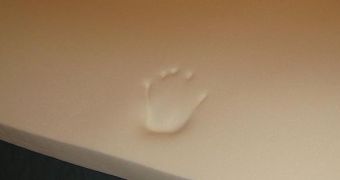Shape-shifting memory foam is no longer a novelty, as it has become a basic commodity in many homes. It can be found in bed mattresses and shoe soles, and it is guaranteed to offer its users an extra degree of comfort. However, it is still very expensive, and out of many people's financial reach. This is one of the main reasons scientists at the Northwestern University (NU) and the Boise State University (BSU) recently began to work on a new class of smart foam, which would be less expensive and also suited for a wider array of applications.
For example, the experts believe that their innovation could be used in the near future in surgical positioning tools, or maybe even in valve mechanisms. After probing many new and revolutionary materials as the basis for their foam, the team decided to work with a nickel-manganese-gallium alloy, which is able to change its shape only when exposed to a magnetic field. The effort was led by the NU James N. and Margie M. Krebs Professor of Materials Science and Engineering David Dunand, who collaborated with Peter Mullner, a professor of materials science and engineering at BSU.
The new foam is capable of “magnetic shape-memory.” This means that, as long as a magnetic field is turned off, it retains whatever shape it's in. As soon as the field is rotated by 90 degrees, the foam reverts to its original position and layout. According to the two research leaders, the new material is able to deform and reform several millions of times over, and is therefore highly reliable. This means that the foam could be incorporated in the future into fast-operating actuators that go into inkjet printers, car engines and surgical tools.
“One key aspect of this new 'smart' foam is that, together with a simple coil to produce a magnetic field, it creates a linear actuator of extreme simplicity – and thus high reliability and miniaturization potential – replacing a much more complex electro-mechanical system with many moving parts,” Dunand explains. “This was such a huge improvement that the foam was tested over and over again to make sure that no experimental mistakes were made. Our new results may pave the way for magnetic shape-memory alloys for use in research labs and commercial applications,” Mullner concludes.

 14 DAY TRIAL //
14 DAY TRIAL //